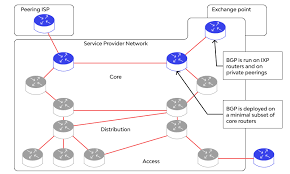The Core Principles of AI: How Machines Learn, Reason, and Perceive
Artificial Intelligence (AI) has rapidly transformed from science fiction into a tangible force, reshaping industries and our daily lives. But beneath the headlines and dazzling applications lies a fascinating set of core principles that enable machines to learn, reason, and even “perceive” the world around them. Understanding these foundational concepts is key to grasping the true power and potential of AI.
What is AI? Beyond the Hype
At its heart, Artificial Intelligence (AI) is the simulation of human intelligence processes by machines, especially computer systems. These processes include learning (the acquisition of information and rules for using the information), reasoning (using rules to reach approximate or definite conclusions), and self-correction.
It’s crucial to distinguish between different levels of AI:
- Narrow AI (Weak AI): Designed and trained for a particular task (e.g., Siri, self-driving cars, image recognition). This is what exists today.
- General AI (Strong AI): A hypothetical AI with human-like cognitive abilities, capable of understanding, learning, and applying intelligence to any intellectual task.
- Superintelligence: A hypothetical AI that surpasses human intelligence in every aspect.
Our current focus, and the subject of this post, is on the principles behind Narrow AI, particularly the advancements driven by Machine Learning (ML) and Deep Learning (DL).
Machine Learning: Learning from Data
The vast majority of modern AI applications are powered by Machine Learning. Instead of being explicitly programmed with rules for every scenario, ML algorithms are designed to learn from data, identify patterns, and make predictions or decisions based on that learning.
The core principle here is “learning from experience without being explicitly programmed” – a phrase often attributed to Arthur Samuel.
Key types of Machine Learning:
1. Supervised Learning
This is the most common type. The algorithm learns from a labeled dataset, meaning the input data is paired with the correct output.
- Principle: The algorithm builds a model that maps inputs to outputs. It learns to predict the output for new, unseen inputs by finding relationships in the training data.
- Example: Training an AI to identify cats in images by showing it thousands of images labeled “cat” or “not cat.”
-
Key Algorithms:
- Linear Regression / Logistic Regression: Simple models for predicting continuous values or classifying between two outcomes.
-
Support Vector Machines (SVMs): Finds the optimal hyperplane that best separates different classes in the data.
- Reference: Cortes, C., & Vapnik, V. (1995). Support-vector networks. Machine Learning, 20(3), 273-297.
- Decision Trees / Random Forests: Tree-like models that make decisions based on a series of if-then rules.
2. Unsupervised Learning
In contrast to supervised learning, unsupervised learning deals with unlabeled data. The algorithm must find hidden patterns, structures, or relationships within the data on its own.
- Principle: Discovering intrinsic groupings or structures in the data without any pre-defined output categories.
- Example: Grouping customers into different segments based on their purchasing behavior without prior knowledge of these segments.
-
Key Algorithms:
- Clustering (e.g., K-Means): Groups similar data points together.
- Dimensionality Reduction (e.g., Principal Component Analysis – PCA): Reduces the number of features in a dataset while retaining most of its important information.
3. Reinforcement Learning
This type of learning involves an agent that learns to make decisions by performing actions in an environment to maximize a reward.
- Principle: The agent learns through trial and error, much like how a human learns to ride a bicycle. It receives positive rewards for desirable actions and penalties for undesirable ones.
- Example: An AI learning to play chess or Go by playing against itself millions of times, optimizing its strategy based on winning or losing.
-
Key Algorithms:
- Q-Learning: An algorithm that learns the value of taking a certain action in a given state.
-
Deep Q-Networks (DQN): Combines Q-Learning with deep neural networks.
- Reference: Mnih, V., Kavukcuoglu, K., Silver, D., Rusu, A. A., Veness, J., Bellemare, M. G., … & Hassabis, D. (2015). Human-level control through deep reinforcement learning. Nature, 518(7540), 529-533.
Deep Learning: The Power of Neural Networks
Deep Learning is a subfield of Machine Learning that uses Artificial Neural Networks (ANNs) with multiple layers (hence “deep”) to learn complex patterns from vast amounts of data. Inspired by the human brain’s structure, these networks excel at tasks involving large, unstructured data like images, audio, and text.
- Principle: Neural networks consist of interconnected “neurons” organized in layers. Each neuron processes input and passes it to the next layer. The “learning” involves adjusting the strength of connections (weights) between neurons.
-
Key Architectures:
-
Convolutional Neural Networks (CNNs): Particularly effective for image recognition and computer vision tasks. They use convolutional layers to automatically learn spatial hierarchies of features from input images.
- Reference: LeCun, Y., Bottou, L., Bengio, Y., & Haffner, P. (1998). Gradient-based learning applied to document recognition. Proceedings of the IEEE, 86(11), 2278-2324. (One of the foundational papers on CNNs).
- Recurrent Neural Networks (RNNs): Designed for sequential data (like time series or natural language), as they have internal memory to process sequences of inputs.
-
Transformers: A more recent and highly influential architecture, especially in Natural Language Processing (NLP), that relies on “self-attention mechanisms” to weigh the importance of different parts of the input sequence. This innovation has led to the development of powerful large language models (LLMs).
- Reference: Vaswani, A., Shazeer, N., Parmar, N., Uszkoreit, J., Jones, L., Gomez, A. N., … & Polosukhin, I. (2017). Attention Is All You Need. Advances in Neural Information Processing Systems, 30. (The seminal paper introducing the Transformer architecture).
-
Convolutional Neural Networks (CNNs): Particularly effective for image recognition and computer vision tasks. They use convolutional layers to automatically learn spatial hierarchies of features from input images.
Reasoning and Perception in AI
While ML and DL focus on learning from data, the broader field of AI also encompasses principles of reasoning and perception:
- Knowledge Representation: How AI systems store and organize information about the world. This can involve logical rules, semantic networks, or ontologies.
- Automated Reasoning: Enabling AI to draw conclusions from existing knowledge using logical inference. This is crucial for expert systems and decision-making processes.
- Natural Language Processing (NLP): Allows computers to understand, interpret, and generate human language. This involves principles of linguistics, statistics, and deep learning.
- Computer Vision: Enables computers to “see” and interpret visual information from the world, identifying objects, faces, and scenes. This heavily relies on CNNs and other deep learning techniques.
The Future of AI: Interdisciplinary and Evolving
The principles of AI are constantly evolving, drawing from computer science, mathematics, statistics, neuroscience, and philosophy. The field is driven by:
- Vast Datasets: The availability of enormous amounts of data.
- Computational Power: The exponential growth in processing capabilities (GPUs, TPUs).
- Algorithmic Innovation: Continuous breakthroughs in ML and DL architectures.
As AI continues to advance, understanding these core principles—how machines learn from data, reason through information, and perceive the world—becomes ever more crucial for harnessing its potential responsibly and effectively. It’s an exciting journey at the intersection of human ingenuity and computational power.




